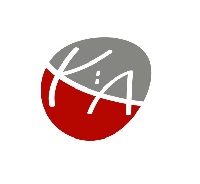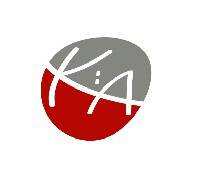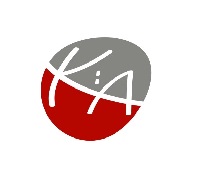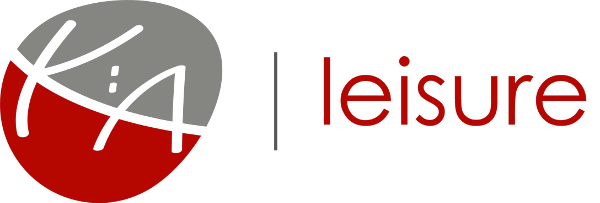Title Page
-
Site
-
Conducted on
-
Conducted by
-
Supporting Personnel
Policies & Procedures
Health & Safety Policy
-
Is the most recent issue of the Company Health & Safety Policy Statement on site?
-
Is the Health & Safety Policy readily available or accessible to staff?
-
Has the information within the policy been effectively communicated to staff?
Site Guidance
-
Is the site guidance for staff up to date?
-
Does site guidance properly reflect working practise?
-
Is the site guidance readily available to staff?
-
Have staff received sufficient familiarisation with the site guidance?
Emergency Action Plans (EAP)
-
Is the facility EAP up to date?
-
Does the EAP contain a section regarding structural failure?
-
Does the EAP contain a section regarding power failure?
-
Does the EAP contain a section regarding bomb threat?
-
Does the EAP contain a section regarding the use of the emergency grab bag?
-
Is there a site of refuge arrangement in place and is this detailed within the EAP?
-
All other relevant information included within the EAP?
-
Is the EAP made readily availabe to staff?
-
Have staff received appropriate familiarisation in the contents of the EAP?
Risk Assessments
-
Risk assessments have been completed?
-
They have been completed by a person familiar with the task or activity and with suitable knowledge of the risk assessment process?
-
Is the detail proportionate to the risk, with an indication of how long they remain valid and when they should be reviewed?
-
They are systematic, covering physical areas, customer activities, staff tasks and significant hazards?
-
Content of individual risk assessments is suitable and sufficient?
-
They include significant findings with identified control measures completed and signed off?
-
Have employees received information, instruction and training on workplace risks and controls at induction, repeated periodically when given a change in responsibilities or when risks change?
Staff Competence
-
Induction Training is known to be effective e.g. judged by competency testing?
-
Does induction training include all new staff?
-
Is induction training suitable and sufficient?
-
Is induction training scheduled throughout the probationary period to encourage retention of information?
-
Records of all training are dated and signed by both the trainer and the employee?
-
There is an ongoing/refresher training plan implemented for all staff?
-
Competency testing is built into the ongoing training programme?
-
Staff have relevant training and qualifications for specialised roles e.g. first aid, IOSH, etc.?
-
Expiry dates for qualifications are monitored?
Fire
Prevention
-
A suitable and sufficient fire risk assessment has been completed by a competent person and is held on site?
-
Staff are trained in fire prevention at induction and at regular intervals as part of a training plan?
-
Records of this training are easily accessible and include detail of what the training involved, list of attendees and name of trainer?
-
Storage areas are secure, tidy and contain no unauthorised substances which could increase fire risk?
-
There is a compliant 'no smoking' sign displayed at the the entrance to the building and in other appropriate areas?
-
Smokers only use designated smoking areas?
-
Key areas are secure from unauthorised access, e.g. stores containing foam matting, plant rooms and boiler rooms?
-
There is no evidence of illicit smoking in toilet areas, or other out of sight public access areas?
Detection & Warning
-
Records of weekly fire alarm testing by staff?
-
Staff test a different call point each week so that all will be tested in a three month period?
-
There are easily accessible records to demonstrate the above?
-
The fire alarm system is serviced by external competent contractors every 6 months?
-
Fire detectors located in appropriate places?
-
Can the alarm be heard in all parts of the building?
-
All employees are familiar with the fire alarm and can distinguish it from any other alarm in the building?
-
All employees understand how to raise the alarm?
Means of Escape
-
Can everyone evacuate the building without being placed at risk? This includes arrangements for those with impaired mobility.
-
Time taken to evacuate is included on records of fire drills? Should take no longer than 3 minutes.
-
Fire exits are easily identifiable, open easily (in the direction of escape) and are unlocked when the building is in use?
-
Fire doors are undamaged? Have doors been damaged by moving equipment?
-
Escape routes are kept clear of stored equipment and obstructions such as vending machines?
-
Escape routes are supported by effective emergency lighting?
-
Emergency lighting is tested monthly (for function), six monthly (for third of rated value) and then annually (for full duration of light)?
-
All key staff take part in fire drills at least twice per year?
-
Do some drills involve the public?
-
Do records of drills include staff taking part, numbers of public, time taken to evacuate, comments on the success of the drill?
Fire Fighting Measures
-
Within fire prevention training, staff receive training on the types of fire extinguishers and what they can be used for?
-
Any staff expected to act as fire wardens have received suitable hands-on training in the use of fire extinguishers?
-
Are extinguishers appropriate to the types of hazard?
-
Do staff carry out weekly recorded checks on fire extinguishers for signs of misuse?
-
Are extinguishers serviced annually by a competent contractor? Is this recorded?
-
Extinguishers are located in obvious, easily accessible positions that can be clearly seen?
Fire Emergency Plan
-
Actions in the event of a fire are detailed within the EAP?
-
Does this include the roles and responsibilities of each group of staff?
-
This plan details the appropriate fire assembly point and site of refuge arrangements?
-
Does the plan detail the arrangements for evacuating people who are especially at risk, such as contractors and those with disabilities (consider PEEPs)?
-
Does the plan detail any machines, gas or power supplies that require isolating in the event of a fire?
-
Does the plan state how the emergency services will be summoned?
-
Is there a designated person to liaise with emergency services when they arrive on site?
-
Does this person have access to a building plan and keys to all areas of the building where the emergency services may require access?
-
Does this person have access to a mobile phone in order to make appropriate calls?
-
Fire actions signs displayed by manual call points?
-
Emergency grab bag readily available containing appropriate contents?
Emergency Management
Bomb
-
An assessment of the likelihood of a bomb alert has been made for this facility with liaison with the police if necessary?
-
There is a specific evacuation procedure and assembly point?
-
Staff are trained in this procedure and are conversant with it?
-
There has been an evacuation drill in the last 12 months?
-
Does the procedure include a section on gas release and precautions to prevent accidental ignition of flammable gas?
-
Does the procedure consider the isolation of areas and moving people to a safe place without delay?
-
Are leak alarms fitted in high risk areas? (E.g. CO2 alarm in plant room).
-
Are staff conversant with this procedure?
-
Has the specified assembly point considered the proximity to possible sources of gas and the effect of wind direction?
Structural Safety
-
Inspections of the building structure have been implemented at appropriate intervals and recorded?
-
Is there a procedure in place to evacuate personnel in the event of structural collapse?
Power Failure
-
Adequate provision of emergency lighting?
-
There is at least an annual maintenance programme completed by a competent person?
-
An EAP is available and practised for power failure?
Control of Contractors
-
Are site management fully aware of the task that the contractors will be undertaking and the likely effects on the site from that undertaking, e.g. interruption of power supply, generation of fumes etc?
-
Where high risk activities are planned, is there a permit to work system in place?
-
Contractors sign in and out and it is possible to say with certainty if they are in site?
-
Site management maintain a watch of the general activity of the contractor to satisfy themselves that they (the contractor) are being duly diligent with regard to health and safety?
-
Contractors are briefed in the emergency procedures for the building?
First Aid
-
A first aid needs analysis assessment is in place?
-
Aid can be summoned to all parts of the facility without delay?
-
Adequate provision of first aid boxes?
-
First aid boxes are adequately stocked, contents are regularly checked and replenished as necessary?
-
Where an area of the building presents a particular risk, has a first aid room been identified?
-
Is the first aid room/area kept clean and tidy?
-
Incident report forms are completed after every accident?
-
Medical waste and sharps are disposed of via a clinical waste bin which is collected by a licensed contractor? Is this procedure detailed in the EAP?
COSHH
-
Manufacturers' safety data sheets are available for all hazardous substances?
-
A COSHH assessment has been completed for all hazardous substances by a competent person?
-
Non-hazardous substances have been identified and assessed as non-hazardous?
-
There is a system of ensuring that the assessments are kept current?
-
Employees are trained in the outcomes of the assessments and the resultant safe systems of work?
-
Substances are transported, handled, stored and disposed of safely?
-
COSHH assessments and information are available at the point of use?
-
Empty chemical containers are disposed of correctly?
Electricity
Fixed Installations/Wiring
-
Is there a current periodic certificate of inspection for the fixed wiring in the facility (undertaken by Institute of Electrical Engineers qualified personnel)?
-
All electrical distribution boards are secured?
-
All electrical maintenance work is only undertaken by a qualified person?
-
Insulation mats are located in front of distribution boards and where necessary raised on a plinth?
-
No combustible materials are stored in switchboard rooms? (Where this is unavoidable, are the materials stored at least 1 metre away from the switchboard)?
Portable Appliances
-
Is there an inventory of portable appliances for the building?
-
There is a programme of PAT testing implemented for all portable appliances with varied frequencies taking into account the nature of use and the environment the appliance is being used in?
-
Is there a record of these tests that is readily available?
-
Damaged equipment is isolated?
Safe Use of Equipment
-
Are staff trained to carry out simple electrical safety checks (condition of plugs, sockets, cables etc.) when setting up equipment and prior to use?
-
Staff are trained to use any specific higher risk electrical equipment?
Safety Signs
-
Safety signs comply with the colour and design requirements of the Safety Signs and Signals Regulations 1996?
-
Safety signs are used correctly?
-
Vandalised/damaged signs have been replaced?
-
The quantity of signs has been controlled to prevent overuse and reduction in impact?
-
The positioning of signs has been carefully thought out and designed to aid their effectiveness?
Domestic Water: Legionnaires Disease
-
Is there a current written scheme for the control of legionella for the building prepared by a competent person. This includes an up-to-date plan/schematic of the water system, a description of the correct and safe operation of the system, the precautions to be taken to control any risk, the checks that need to be carried out to ensure controls are effective, remedial action in the event that it is found or suspected that the scheme has not been effective?
-
Is the written scheme a working document, fully up to date with records of servicing and any monitoring work?
-
Are there any dead-legs in the water system? Check for toilets, hand basins or taps hidden in rooms now used as store rooms.
-
Are little used outlets are flushed to drain on a weekly basis?
-
Does the hot water reach 50 Degrees Celsius within one minute of running?
-
Does the cold water reach less than 20 Degrees Celsius within two minutes of running?
-
Does monthly testing of temperature take place at sentinel outlets?
-
Are shower heads de-scaled and disinfected at least quarterly or as directed by the risk assessment?
Young Persons at Work
-
Are there any employees that are over the compulsory minimum school leaving age to under 18 years of age?
-
Has a risk assessment been undertaken before the employment of any young person? This has considered their inexperience, lack of awareness of risks and immaturity.
-
Have control measures been identified in the assessment above and are these being followed?
-
Has the assessment been made available to the employee, or in the case of a young person of compulsory school age, the parent/guardian?
-
The young person’s working day doesn’t exceed 8 hours, runs between 10pm and 6am or 11pm and 7am and allows 12 hours rest between each working day?
-
Is the young person allowed 30 minutes rest break when working for longer than 4½ hours?
Lone & Remote Working
-
Has a risk assessment been undertaken for each lone worker/solo working activity that reflects both the task and environment?
-
Has the assessment considered the risk of violence and aggression?
-
Has the assessment considered medical fitness for working alone and unsupervised?
-
Has the assessment considered means of summoning assistance?
-
Are suitable and sufficient control measures are in place to minimise the risk?
Manual Handling
-
Has a specific manual handling risk assessment been undertaken for each task? This should reflect the HSE model incorporating TASK, INDIVIDUAL, LOAD, ENVIRONMENT, considerations and OTHER factors i.e. the use of protective clothing.
-
Based on the results of the risk assessment, have steps been taken to reduce the risk of injury to the lowest level reasonably practicable through consulting with the employees, examining the handling from a TILE approach, considering using mechanisation (trolleys etc.) and training?
-
Has training and information been provided to employees involved in manual handling?
-
Are employees supervised to ensure that control measures continue to be used as intended and are effective?
-
Is the risk assessment reviewed regularly or when it is considered to be out of date or inaccurate?
Work Equipment
-
Is lifting equipment subject to annual inspection in line with LOLER?
-
Are gas boilers subject to an annual gas safe inspection?
-
Are pressure systems subject to annual competent inspection?
-
Is all work equipment on site used only for operations for which it is suitable? Check for the presence of equipment that is being used or has been adapted to undertake tasks for which it was not designed.
-
Where work equipment has a maintenance log, is this completed? This may only apply to more complicated/higher risk items of equipment.
-
Work equipment exposed to conditions causing deterioration which is liable to result in dangerous situations is inspected at suitable intervals and this is recorded?
-
Any piece of work equipment that poses a specific risk is operated only by suitably trained and supervised staff?
-
Do staff who use work equipment receive information, instruction, training and supervision proportionate to the complexity and level of risk involved in using it? Where appropriate this is written safe systems of work?
-
If any items of PPE are required when using the equipment, are these readily available and used by staff?
-
Operators' competence is periodically assessed and refresher training given?
-
When not in use, is equipment stored securely as appropriate?
-
Is there a clear system for quarantining defective equipment and either arranging repair or disposing of it?
Asbestos
-
Was this facility constructed prior to the year 2000?
-
Is the ACM register made available to employees or any contractors likely to disturb the ACM’s through their work?
-
Have the recommendations of any asbestos survey been followed? Is there evidence to demonstrate this?
-
Is the condition of any ACM’s subject to monitoring at suitable intervals informed by the survey? The person undertaking the monitoring must have received appropriate training for this task.
-
Has the presence of ACM’s in the building been notified to the Fire Service or is this information contained in a schematic to be given to the Fire Service when they attend a fire at the premises?
-
An appropriate Asbestos Survey of ACMs has been conducted by a competent firm and this is held on site?
-
The building is unlikely to contain asbestos containing materials (ACMs).
Working at Height
-
Does working at height take place in this facility?
-
Has the risk of members of the public falling from height been assessed and controlled?
-
Equipment used is appropriately inspected and maintained by a competent person. When not in use, it is stored appropriately. Ladder and scaff tag systems are used?
-
Have staff using ladders received the appropriate level of training which includes pre-use checks?
-
All work at height is properly planned and organised?
General Workplace
Maintenance, Ventilation, Temperature, Lighting, Cleanliness & Workstations
-
Are there arrangements for rectifying faults without undue delay?
-
Is there an effective system for dealing with defective equipment, removing it from use and repairing or disposing of it?
-
Does the workplace has sufficient ventilation with a source of fresh or purified air? Employees aren’t exposed to unpleasant drafts? Consider receptionists during winter periods.
-
Is the temperature reasonable in work areas? Where it is uncomfortable, has this been considered and local solutions found? Are thermometers located in work areas?
-
Is there sufficient lighting to allow people to work, move from place to place safely and avoid eye strain? Are storage areas sufficiently lit?
-
Are floors, stairs and handrails in good condition and the surface suitable for the traffic and area, e.g. anti-slip in wet areas?
-
General housekeeping to a reasonable standard?
Traffic Routes, Sanitary Conveniences, Washing Facilities, Rest Facilities
-
Is parking controlled where it may obstruct pavements and emergency access?
-
Are the car park and external pathways sufficiently lit to minimise risk?
-
Are car parks well designed and do they segregate pedestrians and vehicles as far as possible?
-
There are sufficient toilet facilities for use by staff ensuring access without undue delay?
-
Each toilet facility is accompanied by washing facilities with hot and cold or warm water, soap and means to dry hands? Facilities are kept clean and are well ventilated?
-
Are there facilities for staff to change out of personal clothing into work clothing and store clothing securely whilst at work?
-
Do staff rest areas include the facility to prepare or obtain a hot drink? Staff who cannot obtain hot food in or near to the workplace are provided with the facility to heat their own food?
-
Are staff facilities accessible and suitable for those with a disability, pregnant women or nursing mothers?
Personal Protective Equipment (PPE)
-
Is PPE subject to a schedule of cleaning, inspection and maintenance?
-
Is storage provided for all items of PPE to prevent contamination and damage?
-
Has supplied PPE been assessed as suitable for the task and does it protect against the hazard identified? Check filter cartridges on any respirators for the types of substances they are effective against and the expiry date of the cartridge. Check that hearing protection provides suitable attenuation for the level of noise present.
Staff Areas
Staff Rooms
-
Staff have access to toilets and hand washing/shower facilities as necessary. These can be shared with the public/other tenants as long as staff can access them without undue delay.
-
Toilets and washing facilities are subject to a regular cleaning schedule.
-
There are facilities for employees to obtain or prepare a hot drink and hot meal.
-
Any food preparation facilities are subject to a scheme of regular cleaning.
-
There is an adequate supply of drinking water for employees. This may be in containers where a mains supply is not available.
-
There are facilities for staff to change into and out of uniform with privacy and store clothing or uniform.
-
The temperature of the staff room is reasonable, i.e. at least 16 Degrees °C and generally not more than 30 Degrees °C. There should be means to achieve thermal comfort where the room is too hot or cold e.g. local heating or cooling.
-
The area is kept secure.
Offices & Reception
-
Lighting is suitable for the activities, in particular any display screen work.
-
Desks and chairs are in good condition particularly for display screen work.
-
Cables are routed to avoid trip hazards.
-
Housekeeping is good. Electrical equipment is not covered in paper or otherwise covered over.
-
Electrical equipment is subject to inspection and test.
-
The office has sufficient ventilation and the temperature is reasonable.
-
Employees have sufficient working space.
-
Staff are trained to deal with violent/threatening situations.
-
The area is secure from unauthorised access.
Noise
-
Where a noise issue is suspected, a full risk assessment has been undertaken by a competent person?
-
Measures have been identified to eliminate risks and exposures or reduce them to as low a level as is reasonably practicable. Priority being given to combating noise at source.
-
Consideration has been made of the need to provide hearing protection. Where this is supplied, it is suitable for the particular hazard (selecting the correct hearing protection is important as not all noise is of the same frequency).
-
Where noise exposure has reached the upper action value, the use of hearing protection is managed by signed hearing protection zones.
-
Where employees are at particular risk or noise levels reach the upper action value, health surveillance has been arranged.
-
Employees have been consulted about the findings of the risk assessment.
-
Employees have been trained in the required protective measures.
Summary
-
Additional Comments or Observations
-
Assessor Name and Signature











